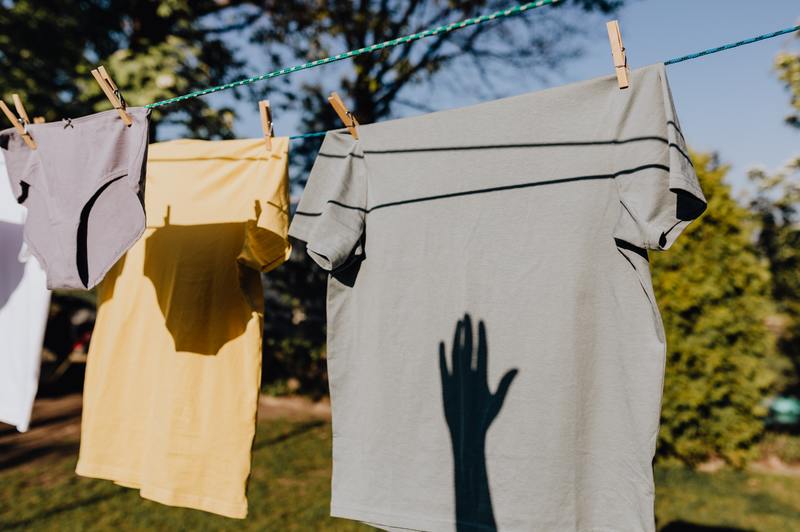You can use diluted or undiluted white vinegar in learning how to remove mildew from clothes with vinegar. Instead of using bleach, we urge you to use this household condiment instead.
You can check its use on the mildew removal procedure below.

What Is Mildew?
Mildew is a typical yet unwanted growth that invades most households. It is light in color, so people mistake it as a predecessor to mold.
Mold is more severe than mildew because it penetrates the objects it contaminates. It also causes severe allergic reactions, especially toxic mold.
Despite being mildew rather than mold, mildew can still have adverse effects. It can lead to skin irritation and mild respiratory symptoms.
There are also two kinds of mildew, and they are differentiated through their texture. One is powdery mildew, and the other is downy mildew.
You can learn about what causes downy mildew in the linked article. If you’re more interested in powdery mildew, then here’s a guide on how to get rid of powdery mildew on cannabis plants.
How Do Clothes Acquire Mildew Growth?
Clothes acquire mildew growth the same way fabrics do by being stored in a place with high humidity levels and little to no air ventilation. Since there is a high moisture level in the air, the material tries to absorb some of it, making them vulnerable to mildew spores.
Their susceptibility to the spores increases as they cannot dry themselves because of the lack of airflow.
Although mildew commonly victimizes plants, clothes made of natural fibers can also fall victim to them. Articles made of woven textiles and cotton are more susceptible to mildew than synthetic fabrics.
However, this shouldn’t discourage you from using natural fabrics. However, we expect you to take better care of them due to their vulnerability to fungi.
Besides high moisture levels, clothes with dirt or dust accumulation can also invite mildew spores. This is because the build-up serves as the fungi’s food source, sustaining its growth.
Steps In Removing Mildew From Clothes With Vinegar
Before starting the mildew removal process, you have to fix the cause of mildew growth first. This is essential because if you still have water damage, you will find another set of mildew build-up in your clothes if you do not attend to it.
Anyway, after you remove the cause of mildew and the fungi itself, using vinegar would help prevent future growth. Here are the steps in using vinegar to eliminate the fungus on your clothes.
Step #1. Pre-treat the clothes
Since bleach may be too harsh to be used on fabrics, vinegar is a safer choice. If there is a prominent stain on your clothes, you can directly apply the vinegar to the material.
If the smell is too much for you, you can dilute a cup of it in a bucket of water instead.
Step #2. Dab the pre-treatment on the fabric
You can use diluted vinegar and dip the clothes in it. While you do so, rub the area with a clean toothbrush (you can use old ones).
Rubbing it would help loosen the mildew spores and kill them with the solution.
Step #3. Wash at high temperature
Mildew can survive warm water, but a hot wash would kill it. Before proceeding with this washing step, ensure that your garments can take it.
Check the care labels and if it is okay, put them in the machine and use stain-removing detergent.
Step #4. Air-dry
After washing the clothes, you have to properly dry them so that mildew does not have a chance to grow on them again.
For Mildew Smell
Vinegar is also effective in removing mildew, incredibly stubborn ones. Just get a full cup of white vinegar and pour it in the washer along with the mildew-contaminated laundry.
For mild-smelling clothes, use vinegar like a fabric softener. Add it during the rinse cycle, when the clothes have just been run with detergent.
After washing, inspect them and rewash them as necessary.
Other Mildew-Killing Alternatives To Vinegar
If the smell of vinegar bothers you so much, you can use baking soda instead. It is an effective alternative to vinegar but can also be used with the household condiment.
In using baking soda, add a cup and mix it with detergent. Then, run the cycle with the hottest water that your clothes can handle.
Then, inspect the garments if the mildew is gone. If not, repeat the steps and dry them after
Tips On Mildew Prevention
As you know, mildew grows under certain conditions; so, to prevent its growth, you have to control the criteria it requires to develop.
Keep your household safe from water damage by maintaining your piping systems and roof. Ensure that your storage spaces get airflow once in a while and that there is no dust build-up in them.
These simple ways to manage your household can help you in the long run.
Conclusion
We shared with you how to remove mildew from clothes with vinegar. In case that isn’t enough, we included an alternative to vinegar.
Lastly, we added the causes and the ways you can prevent mildew growth to complete the mildew removal process.
